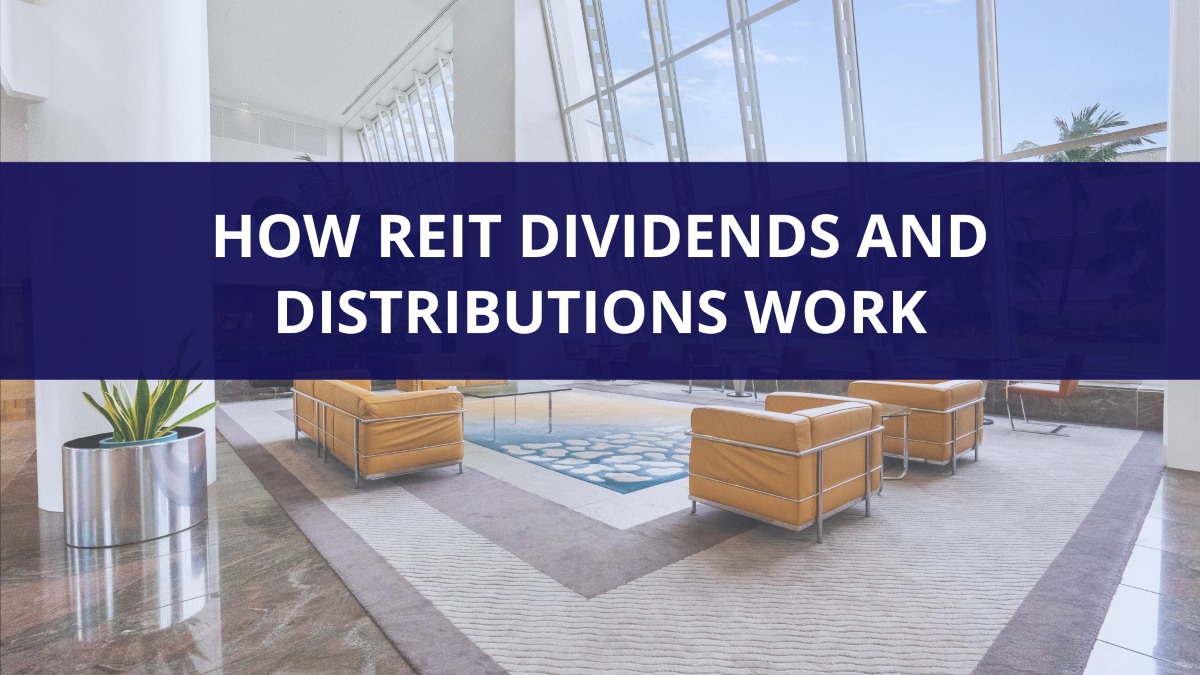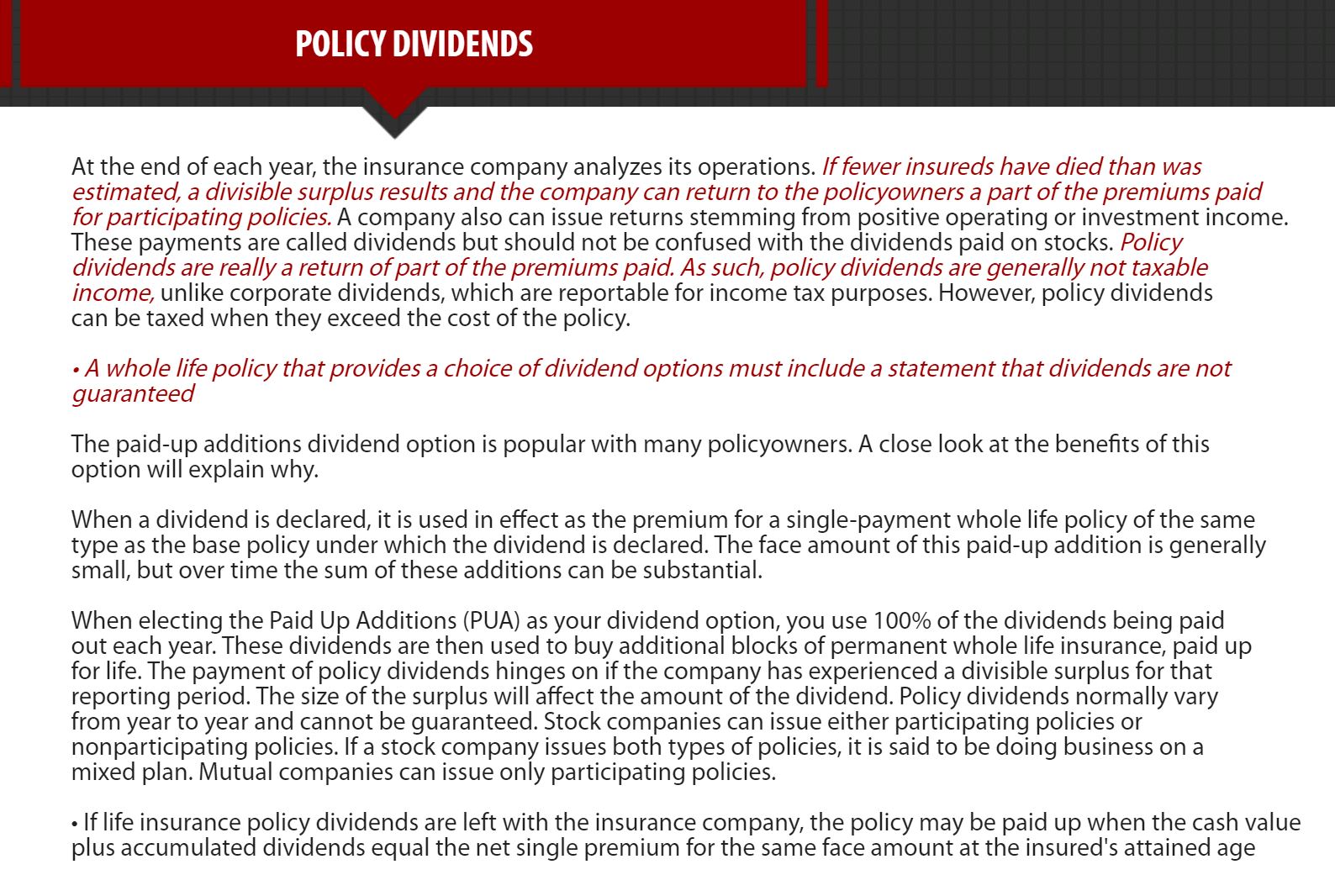

Finance
How Are Dividends From REITs Taxed?
Published: January 3, 2024
Learn how dividends from real estate investment trusts (REITs) are taxed and gain insights into the tax implications of investing in these popular financial instruments. Explore the finance aspect of REIT dividends and make informed investment decisions.
(Many of the links in this article redirect to a specific reviewed product. Your purchase of these products through affiliate links helps to generate commission for LiveWell, at no extra cost. Learn more)
Table of Contents
Introduction
Real Estate Investment Trusts (REITs) have emerged as popular investment options for individuals and corporations seeking to diversify their portfolios and generate a steady stream of income. REITs allow investors to invest in real estate without directly owning and managing properties. One of the key benefits of investing in REITs is the regular distribution of dividends to shareholders.
However, understanding how dividends from REITs are taxed is crucial for investors to make informed decisions. The tax treatment of REIT dividends can vary depending on factors such as the type of dividend received, the investor’s tax bracket, and the investor’s residency status. This article aims to shed light on the taxation of dividends from REITs, providing insights for individual, corporate, and international investors.
Investing in REITs offers investors the potential for attractive yields, as these companies are required to distribute a significant portion of their income to shareholders. By law, REITs must distribute at least 90% of their taxable income to shareholders in the form of dividends. This requirement makes REITs an attractive investment option for income-focused investors.
Additionally, REITs provide investors with exposure to real estate assets across a diverse range of property types, including commercial properties such as office buildings, retail centers, and hotels, as well as residential properties such as apartments and single-family homes. This diversification can help mitigate risks associated with investing solely in a single property or sector.
With the increasing popularity of REIT investments, it is essential for investors to understand the tax implications of investing in these vehicles. The IRS has established specific rules for the taxation of dividends from REITs, which differ from the tax treatment of dividends from traditional stocks.
In the following sections, we will delve deeper into the different types of dividends from REITs and how they are taxed. We will explore the distinction between qualified and non-qualified dividends, the tax treatment for individual and corporate investors, and the considerations for international investors. Understanding these tax implications will help investors optimize their after-tax returns and make informed investment decisions within the REIT space.
What is a REIT?
A Real Estate Investment Trust (REIT) is a company that owns, operates, or finances income-generating properties. The primary purpose of a REIT is to generate revenue from rental income, capital appreciation, or both. REITs are required to distribute a significant portion of their taxable income to shareholders in the form of dividends, making them an attractive investment option for individuals and institutions seeking regular income.
REITs can invest in a variety of real estate sectors, including residential, commercial, industrial, and hospitality properties. Some REITs may focus on a specific property type, while others may have a diversified portfolio of properties. By pooling resources from multiple investors, REITs can acquire and manage properties that would typically be difficult for individual investors to own.
To qualify as a REIT, a company must meet certain requirements set forth by the Internal Revenue Service (IRS). These requirements include:
- Income Distribution: REITs must distribute at least 90% of their taxable income to shareholders in the form of dividends. This distribution requirement makes REITs attractive for income-focused investors, as they provide a consistent stream of cash flow.
- Asset Allocation: A REIT must invest at least 75% of its assets in real estate, cash, and government securities. It can invest the remaining 25% in other assets such as stocks and bonds.
- Number of Shareholders: A REIT must have a minimum of 100 shareholders, with no more than 50% of its shares held by five or fewer individuals. This requirement ensures that REITs are widely held and not controlled by a small group of investors.
By meeting these requirements, REITs enjoy several benefits. Firstly, they do not pay federal income tax at the corporate level. Instead, the tax liability is passed onto the individual investors who receive dividends from the REIT. Secondly, REITs have access to a pool of capital that can be used for property acquisition and expansion. Lastly, REITs offer investors the opportunity to diversify their portfolios and gain exposure to the potentially lucrative real estate market without the need to directly own and manage properties.
In summary, a REIT is a company that owns and operates income-generating properties and distributes a significant portion of its income to shareholders in the form of dividends. By meeting specific IRS requirements, REITs enjoy favorable tax treatment and provide investors with an accessible and diversified way to invest in the real estate market.
Understanding Dividends from REITs
Dividends from Real Estate Investment Trusts (REITs) play a crucial role in attracting investors who seek regular income from their investments. Dividends from REITs are typically derived from the rental income generated by the properties owned by the REIT. It is important to understand how these dividends are calculated and distributed to investors.
REITs are required by law to distribute a significant portion of their taxable income to shareholders. In general, this requirement calls for REITs to distribute at least 90% of their taxable income in the form of dividends. As a result, many REITs provide investors with a consistent stream of cash flow through regular dividend payments.
The dividends from REITs are calculated based on the rental income generated by the properties in the REIT’s portfolio. This rental income is collected from tenants who lease the properties owned by the REIT. The collected rent, minus the expenses incurred in operating and maintaining the properties, forms the taxable income of the REIT. This taxable income is what determines the amount of dividends that will be distributed to shareholders.
It is important to note that not all of the dividends distributed by a REIT are considered ordinary income for tax purposes. The tax treatment of REIT dividends depends on various factors, such as the source of the income and the investor’s tax bracket. Dividends from REITs can be classified as either qualified dividends or non-qualified dividends.
Qualified dividends are subject to preferential tax rates, similar to dividends received from traditional stocks. To qualify for preferential tax treatment, the dividends must meet specific criteria outlined by the Internal Revenue Service (IRS). Generally, to be classified as qualified dividends, the dividends must be derived from the REIT’s qualified real estate income and meet holding period requirements.
On the other hand, non-qualified dividends do not meet the IRS criteria for preferential tax treatment. These dividends are typically derived from income sources other than qualified real estate income, such as capital gains from property sales or income from non-real estate business activities conducted by the REIT. Non-qualified dividends are generally taxed as ordinary income at the investor’s applicable tax rate.
Understanding the classification of REIT dividends is crucial for investors to accurately assess the tax implications of their investment. It is recommended that investors consult with a tax professional to determine the specific tax treatment of their REIT dividends based on their individual circumstances.
In the next sections, we will explore the tax treatment of REIT dividends for individual investors, corporate investors, and international investors. Proper understanding of the tax rules will allow investors to make informed decisions and optimize their after-tax returns when investing in REITs.
Tax Treatment of REIT Dividends
The tax treatment of dividends from Real Estate Investment Trusts (REITs) differs from the tax treatment of dividends from traditional stocks. To fully understand the tax implications of investing in REITs, it’s important to consider the classification of the dividends and the tax rules that apply to different types of investors.
REIT dividends can be categorized as qualified dividends or non-qualified dividends, depending on various factors. Qualified dividends are subject to preferential tax rates, while non-qualified dividends are taxed as ordinary income. The classification of the dividends and the corresponding tax treatment are determined by the source of the income and the holding period of the investment.
Qualified Dividend Income:
Qualified dividends from REITs are eligible for lower tax rates, similar to qualified dividends from traditional stocks. To be considered qualified, the dividends must meet specific criteria set by the Internal Revenue Service (IRS). The key requirements for dividends to be classified as qualified include:
- The dividends must be derived from the REIT’s qualified real estate income.
- The investor must hold the REIT shares for a specified holding period, which is generally more than 60 days during the 121-day period that begins 60 days before the ex-dividend date.
Qualified dividends are taxed at the same rates as long-term capital gains, which are typically lower than ordinary income tax rates. For most individual investors, the maximum tax rate on qualified dividends is currently 20%, depending on the taxpayer’s income level.
Non-Qualified Dividend Income:
Non-qualified dividends from REITs do not meet the criteria for qualified dividend treatment. These dividends are typically derived from sources other than qualified real estate income, such as capital gains from property sales or income from non-real estate business activities conducted by the REIT. Non-qualified dividends are generally taxed at the investor’s applicable ordinary income tax rate, which can be significantly higher than the tax rates for qualified dividends.
It’s important for investors to track their non-qualified dividends separately, as these dividends may increase their overall tax liability. This can be especially relevant for investors who are in higher tax brackets.
The tax treatment of REIT dividends also varies based on the type of investor. The following sections will explore the tax implications for individual investors, corporate investors, and international investors.
It’s worth noting that tax laws may change, and it is essential for investors to consult with a tax professional or review the latest IRS guidelines to ensure compliance with the most current tax regulations.
Qualified Dividend Income
Qualified Dividend Income refers to the portion of dividends that meet specific criteria outlined by the Internal Revenue Service (IRS). These dividends are eligible for lower tax rates, making them particularly attractive to investors. To be classified as qualified dividends, certain requirements must be met, including the source of the income and the holding period of the investment.
In the case of dividends from Real Estate Investment Trusts (REITs), qualified dividend treatment depends on whether the dividend is derived from the REIT’s qualified real estate income. Qualified real estate income generally includes rental income from real property owned by the REIT.
In addition to the source of the income, the investor must hold the REIT shares for a specified holding period. The holding period requirement states that the investor must hold the shares for more than 60 days during the 121-day period that begins 60 days before the ex-dividend date. If this holding period is not met, the dividends will be classified as non-qualified.
Why are qualified dividends beneficial for investors? The primary advantage is the favorable tax treatment. Qualified dividends are taxed at the same rates as long-term capital gains, which are typically lower than ordinary income tax rates. The maximum tax rate on qualified dividends is currently 20% for most individual investors, depending on their income level.
For example, if an investor receives qualified dividends from a REIT and falls within the 20% tax bracket for long-term capital gains, they would only pay a 20% tax rate on those dividends. This can result in significant tax savings compared to the higher tax rates applied to ordinary income.
It’s important to note that the tax rates for qualified dividends can vary depending on the investor’s income level and tax bracket. The maximum tax rate of 20% applies to individuals with taxable income above a certain threshold. Investors in lower tax brackets may qualify for even lower tax rates, including a 0% tax rate on qualified dividends.
It’s crucial for investors to properly track and report their qualified dividends when filing their tax returns. Qualified dividends are reported on Form 1099-DIV, which is provided by the issuer of the dividend. Investors should consult with a tax professional or refer to the most up-to-date IRS guidelines to ensure accurate reporting and compliance with the current tax regulations.
By understanding the concept of qualified dividend income and utilizing the favorable tax treatment, investors can maximize their after-tax returns and make informed investment decisions within the REIT space.
Non-Qualified Dividend Income
Non-Qualified Dividend Income refers to the portion of dividends that do not meet the specific criteria outlined by the Internal Revenue Service (IRS) to qualify for preferential tax treatment. These dividends are subject to ordinary income tax rates, which can be significantly higher than the tax rates applied to qualified dividends or long-term capital gains.
In the case of dividends from Real Estate Investment Trusts (REITs), non-qualified dividends are typically derived from sources other than the REIT’s qualified real estate income. This can include capital gains from the sale of properties, income from non-real estate business activities conducted by the REIT, or dividends that do not satisfy the holding period requirement.
Unlike qualified dividends, which are taxed at the same rates as long-term capital gains, non-qualified dividends are treated as ordinary income. The tax rates for ordinary income depend on the investor’s individual tax bracket, which is determined by their total taxable income.
Due to the progressive nature of the U.S. tax system, higher income individuals may face higher tax rates on their non-qualified dividends. The highest marginal tax rate for ordinary income is currently 37% (as of 2021), compared to a maximum tax rate of 20% for qualified dividends and long-term capital gains.
Investors should be aware that non-qualified dividends can potentially increase their overall tax liability. It’s important to accurately report and account for these dividends when filing tax returns. REITs typically provide Form 1099-DIV to investors, which reports the total dividends distributed, distinguishing between qualified and non-qualified dividends.
It’s worth noting that the tax treatment of non-qualified dividends can vary depending on the investor’s specific situation and tax laws in their jurisdiction. Investors should consult with a tax professional or refer to the most up-to-date IRS guidelines to ensure compliance with current tax regulations.
Despite the higher tax rates, non-qualified dividends from REITs can still be an attractive investment option for individuals seeking regular income. It’s important to evaluate the overall tax implications and consider the potential impact on after-tax returns when investing in REITs that distribute non-qualified dividends.
By understanding the concept of non-qualified dividend income and its tax implications, investors can effectively plan their investment strategies, optimize their tax efficiency, and make informed decisions based on their individual financial goals and circumstances.
Taxation for Individual Investors
When it comes to taxation, individual investors who receive dividends from Real Estate Investment Trusts (REITs) need to understand the specific rules that apply to their situation. The tax treatment of REIT dividends for individual investors depends on various factors, including the classification of the dividends and the investor’s tax bracket.
If the dividends received from a REIT meet the criteria for qualified dividends, they may be eligible for preferential tax rates. Qualified dividends are taxed at the same rates as long-term capital gains, which are typically lower than ordinary income tax rates. The maximum tax rate on qualified dividends for most individual investors is currently 20%, depending on their income level.
On the other hand, if the dividends from a REIT do not meet the specific criteria outlined by the Internal Revenue Service (IRS) to be classified as qualified dividends, they are considered non-qualified dividends. Non-qualified dividends are subject to ordinary income tax rates, which can be significantly higher than the tax rates for qualified dividends.
The tax rates for ordinary income vary based on the individual’s tax bracket. The U.S. tax system uses a progressive structure, where higher income individuals face higher tax rates. The highest marginal tax rate for ordinary income is currently 37% (as of 2021). Therefore, non-qualified dividends can potentially be taxed at this higher tax rate.
Individual investors should receive Form 1099-DIV from the REIT, which reports the total dividends distributed and distinguishes between qualified and non-qualified dividends. This form is used to report and account for the dividends on the individual’s tax return.
It’s important for individual investors to track and report their REIT dividends accurately to ensure compliance with the IRS regulations. This requires understanding the classification of the dividends and knowing the applicable tax rates based on the individual’s tax bracket.
Investors who receive dividends from REITs should consider consulting with a tax professional or reviewing the most up-to-date IRS guidelines. A tax professional can provide personalized advice based on the investor’s individual circumstances and assist in maximizing their after-tax returns from investments in REITs.
By understanding the tax implications and properly reporting their REIT dividends, individual investors can make more informed decisions, optimize their tax efficiency, and effectively incorporate REIT investments into their overall financial strategy.
Taxation for Corporate Investors
Corporate investors who receive dividends from Real Estate Investment Trusts (REITs) face unique tax considerations compared to individual investors. The tax treatment of REIT dividends for corporate investors is distinct and differs from the tax treatment for individual shareholders.
Unlike individual investors who may receive favorable tax treatment for qualified dividends, corporate investors are generally subject to the standard corporate income tax rates for all dividends received, including those from REITs. The dividends are typically treated as ordinary income, which is taxed at the applicable corporate tax rate.
Corporate tax rates can vary depending on the level of taxable income and the corporate structure. The current corporate tax rate in the United States is a flat 21% (as of 2021). However, tax laws and rates may differ in other jurisdictions, so corporate investors should consult with tax professionals familiar with the tax regulations in their specific jurisdiction.
It’s important for corporate investors to accurately account for the REIT dividends when reporting their income and filing their corporate tax returns. The dividends received from REITs should be included as part of the corporation’s taxable income, subject to the applicable tax rate.
Similar to individual investors, corporate investors should receive Form 1099-DIV from the REIT, which reports the total dividends distributed. This form is used to report and account for the dividends on the corporate tax return.
Corporate investors should work with tax professionals who are knowledgeable about corporate taxation and can provide guidance on the specific tax rules relevant to their situation. These professionals can help ensure compliance with the tax regulations and suggest strategies for optimizing the tax efficiency of their investments in REITs.
It’s important to note that the tax implications for corporate investors can be complex, and the specific circumstances of each corporation may influence the tax treatment of REIT dividends. Therefore, obtaining professional tax advice specific to the corporation’s situation is highly recommended.
By understanding the tax implications and working with tax professionals, corporate investors can navigate the complexities of REIT dividend taxation, accurately report their income, and effectively incorporate REIT investments into their overall tax planning and corporate strategy.
Taxation for International Investors
International investors who receive dividends from Real Estate Investment Trusts (REITs) face specific considerations when it comes to taxation. The tax treatment of REIT dividends for international investors can vary based on factors such as the investor’s country of residence, tax treaties between their country of residence and the country where the REIT is located, and the specific tax laws and regulations in both jurisdictions.
International tax laws and regulations may have provisions that determine how dividends from REITs are taxed. These provisions can include rules for withholding taxes, which are taxes withheld by the country where the REIT is located before the dividends are paid out to the investor.
In most cases, international investors may be subject to withholding taxes on the dividends received from REITs. The withholding tax rate can vary depending on the tax treaty between the investor’s country of residence and the country where the REIT is located. Tax treaties aim to prevent double taxation and often provide reduced withholding tax rates for qualified investors.
It is important for international investors to understand the withholding tax requirements and procedures in both their country of residence and the country where the REIT is located. They should consult with tax professionals who specialize in international tax matters to ensure compliance with the relevant tax laws and regulations.
Additionally, international investors may also need to consider the tax implications of investing in REITs based on their residency status and the specific tax rules of their country of residence. Some countries may have different tax treatments for dividends received from foreign investments compared to domestic investments.
International investors who receive dividends from REITs should also be aware of any reporting requirements in their country of residence. They may need to report the dividend income on their tax returns and comply with any additional documentation or disclosure requirements.
Given the complexity of international tax regulations, it is advisable for international investors to seek professional advice from tax experts who are familiar with the specific tax rules and regulations in their country of residence and the country where the REIT is located.
By understanding the tax implications, complying with reporting requirements, and working with tax professionals, international investors can effectively navigate the complexities of REIT dividend taxation and optimize their tax positions within the framework of international tax laws.
Special Considerations for REIT Dividends
When investing in Real Estate Investment Trusts (REITs) and receiving dividends, there are several special considerations that investors should keep in mind. These considerations can have an impact on the tax treatment, overall investment strategy, and potential risks associated with REIT dividend income.
REIT Dividends and Required Distribution:
REITs are required by law to distribute at least 90% of their taxable income to shareholders in the form of dividends. This requirement ensures that REIT investors have access to a steady stream of income. However, the high distribution requirement also means that REITs may have limited funds available for reinvestment or growth compared to other types of companies.
Fluctuating Dividend Payments:
The dividend payments from REITs are dependent on the performance of the underlying real estate assets. As a result, dividend payments from REITs can be relatively volatile and may fluctuate over time. Investors should be prepared for potential changes in dividend amounts and understand that past dividend performance does not guarantee future results.
Diversification and Risk:
REIT investors should consider the importance of diversification within their investment portfolio. Investing in multiple REITs across different property types and geographic regions can help mitigate risks associated with concentrated exposure to a single REIT. Diversification can also help balance potential fluctuations in dividends and enhance the overall stability of the investment portfolio.
Liquidity and Exit Strategies:
Investors should also consider the liquidity of their REIT investments. Unlike publicly traded stocks, REIT shares may have limited trading volume, making it challenging to buy or sell shares at desired prices. It’s essential for investors to have a well-thought-out exit strategy and be prepared for potential limitations on the liquidity of their investment in REITs.
Tax Efficiency and Strategies:
Investors should focus on optimizing the tax efficiency of their REIT dividend income. This can include understanding the classification of dividends (qualified versus non-qualified) and the tax rates applicable to their specific situation. By consulting with tax professionals and utilizing tax-efficient strategies, investors can minimize the impact of taxes on their after-tax returns from REIT investments.
Research and Due Diligence:
Before investing in REITs, investors should conduct thorough research and due diligence. It is essential to assess the financial health, management team, and track record of the REIT, as well as analyze factors such as property holdings, occupancy rates, lease terms, and market conditions. This research can help investors make informed decisions and select REIT investments that align with their investment goals and risk tolerance.
Overall, investors should approach REIT dividend income with a clear understanding of the unique considerations involved. By considering these factors and utilizing proper due diligence and tax planning, investors can effectively navigate the REIT landscape and make informed decisions to optimize their investment outcomes.
Conclusion
Understanding the tax treatment of dividends from Real Estate Investment Trusts (REITs) is crucial for investors seeking to maximize their after-tax returns and make informed investment decisions within the REIT space.
In this article, we explored the basics of REITs, including their purpose, structure, and the requirement to distribute a significant portion of their taxable income to shareholders. We discussed the distinction between qualified and non-qualified dividends and how these classifications impact the tax treatment for investors.
We examined the tax implications for individual investors, corporate investors, and international investors. For individual investors, qualified dividends may be eligible for preferential tax rates, while non-qualified dividends are taxed as ordinary income. Corporate investors typically face standard corporate income tax rates on REIT dividends, and international investors should consider tax treaties, withholding taxes, and the tax regulations of both their country of residence and the country where the REIT is located.
Special considerations for REIT dividends were also discussed, such as the required distribution, fluctuating dividend payments, diversification and risk, liquidity and exit strategies, as well as tax efficiency and research due diligence. These factors can impact the overall investment strategy, risk management, and potential returns associated with investing in REITs.
To navigate the complexities of REIT dividend taxation, investors are encouraged to consult with tax professionals who specialize in the field. They can provide personalized advice based on individual circumstances and assist in optimizing tax efficiency within the framework of local tax laws and regulations.
In conclusion, REITs offer investors the opportunity to diversify their portfolios, generate regular income, and gain exposure to the real estate market. Understanding the tax treatment of REIT dividends is essential for investors to maximize returns and comply with tax regulations. By staying informed about the classification of dividends, tax rates, and special considerations, investors can make educated choices and effectively incorporate REIT investments into their overall financial strategies.














